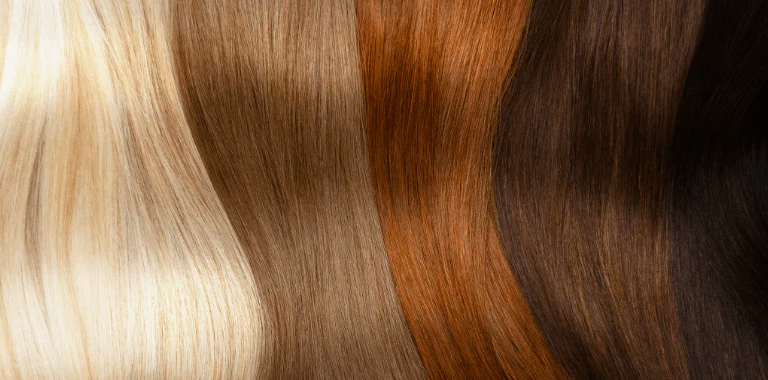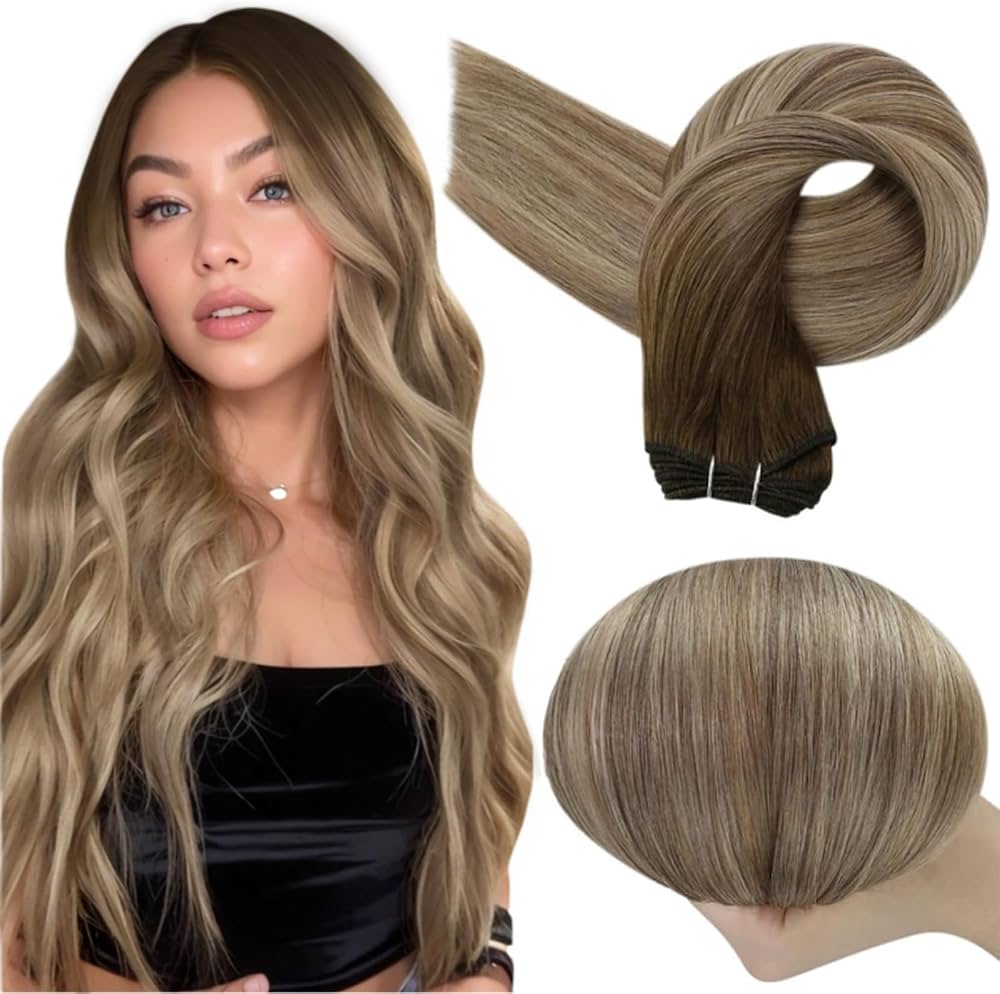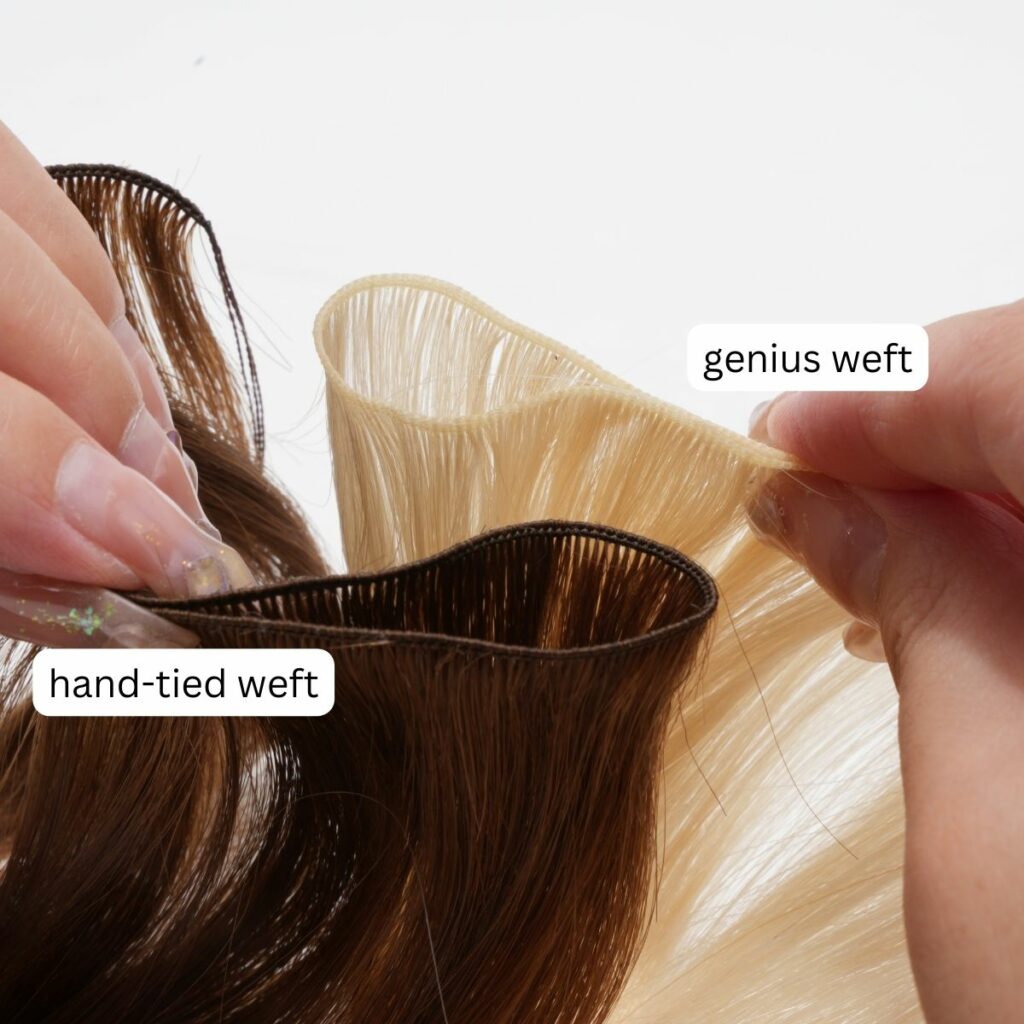Are Wefts Made from Real Human Hair? A Deep Dive into Quality and Craftsmanship
Yes, many wefts are made from real human hair1, though they can also be made from synthetic materials2. In the diverse weave of hair extension options, high-quality wefts often steal the spotlight due to their construction from real human hair1, such as Remy hair3. This type of hair retains intact cuticles, presenting a more natural appearance and feel. Meanwhile, synthetic options, while cheaper, frequently fall short in terms of durability. Let's unravel the intricacies of wefts and distinguish the best from the rest, as we venture into the captivating world of hair extensions4.
Are Weaves Made Out of Real Hair?
Unquestionably, real human hair1 is a prized material in the world of weaves. The appeal of natural hair weave5s lies in their authenticity and ease of blending seamlessly with one's natural locks. At Plucharm Hair, for instance, we pride ourselves on sourcing only the finest virgin hair6 for our wefts—a commitment that stretches back to our company's inception.
Dive Deeper: The Allure of Real Human Hair Weaves
Human hair weave5s offer unmatched versatility and natural aesthetics7. They withstand styling, dyeing, and heat better than synthetic counterparts. With businesses like Plucharm Hair, which focus on providing high-quality, natural hair weave5s, clients can explore a myriad of choices that align with their salon's needs, ensuring clients leave satisfied and eager to revisit.
Moreover, hair sourced from 100% human origins typically retains its structure and longevity better than synthetic options. It's not just about enhancing beauty but also maintaining it over time—something human hair excels at. Brands, including Luxy Hair and Bellami, also emphasize real human hair1 in their offerings, ensuring a wide variety for diverse clienteles.
How Do You Know If Your Weave is 100% Human Hair?
Identifying authentic human hair weave5s is crucial to ensure you're getting what you pay for. It's a common pain point for salon owners who seek only top-tier products for their discerning clients.
Dive Deeper: Tips to Identify Pure Human Hair Weaves
- The Burn Test: Real human hair burns evenly and produces ash, while synthetic hair tends to melt and emit a chemical scent.
- Texture and Feel: Human hair feels smoother and more natural to the touch. It's this tactile experience that resonates with clients who slid their fingers through their locks, whether real or enhanced.
- Water Drop Test: When wet, human hair absorbs water and reacts naturally, while synthetic types tend to repel water.
It's also essential to work with trusted suppliers who provide transparency about their sourcing and quality, like Plucharm Hair, which integrates stringent quality control processes8 to certify authenticity.
Where Does the Real Hair in Extensions Come From?
The journey of human hair, from a donor to a wearable extension, is as fascinating as it is complex. Understanding this process can deepen appreciation for the product's value.
Dive Deeper: Tracing the Roots of Hair Extensions
The best quality hair, such as virgin Remy, is ethically sourced from donors who voluntarily sell their hair, often to local collectors. This hair is then meticulously processed to maintain cuticle alignment9, minimizing tangling and maximizing the natural sheen.
Areas like India and Southeast Asia are prominent sources due to the cultural practice of hair donation10, providing a sustainable source of raw materials. Brands like The Hair Trader and Great Lengths emphasize ethical sourcing, ensuring that the hair not only looks good but feels good to those wearing it, knowing its origin story respects the original donor.
At Plucharm Hair, our dedication to sourcing primarily from these routes ensures the maintaining of dignity and quality. Our product excellence is reinforced by a dedicated procurement team, ensuring each strand meets our high standards before it even enters the production line.
What Are Wefts Made Of?
The core of any great weave lies in its weft—long horizontal layers of closely sewn hair. But what materials dominate this arena, and what should you seek?
Dive Deeper: Components and Craftsmanship of Wefts
A weft’s composition can significantly impact its performance and aesthetic quality. Here's a breakdown:
| Material | Pros | Cons |
|---|---|---|
| Real Human Hair | Natural Shine, Easy Styling, Long-lasting | Higher Cost, Requires Maintenance |
| Synthetic Fibers | Affordable, Vibrant Colors Available | Limited Styling Options, Less Durable |
Hand-tied Wefts: These boast thin, delicate construction, crafted with precision. Each strand is meticulously tied for a seamless look—ideal for those who seek a barely-there feel.
Machine Wefts: Known for their durability and fullness, they suit more voluminous styles and provide flexibility in styling and longevity.
Ultimately, the choice between human and synthetic, hand-tied or machine, hinges on the individual needs of the salon and its clientele—be it for everyday wear or an outstanding occasion.
Conclusion
Revisiting our core belief, many wefts leverage real human hair1 for the superior aesthetics and longevity they offer. At Plucharm Hair, our commitment is not just about supplying top-notch hair extensions4 but empowering salon owners like yourself with the tools to elevate business offerings, maintain clientele loyalty, and stand out in a competitive market.
By understanding the nuances—from recognizing real hair to sourcing origination and choosing suitable weft types—you can make informed decisions that resonate with your brand’s values and quality promises.
Ultimately, embracing real human hair1 wefts while understanding the craftsmanship involved ensures that both your business and clients stand at the forefront of style and sophistication.
-
Explore the advantages of real human hair, including its natural look and durability, to enhance your understanding of hair extensions. ↩ ↩ ↩ ↩ ↩ ↩
-
Discover the pros and cons of synthetic materials compared to human hair to make informed choices. ↩
-
Learn about Remy hair's unique qualities and why it's the top choice for high-quality hair extensions. ↩
-
Explore the various types of hair extensions to find the best fit for your style and needs. ↩ ↩
-
Learn about the unique characteristics of hair weaves and their benefits for styling. ↩ ↩ ↩ ↩
-
Understand the sourcing and quality of virgin hair, which is crucial for premium hair extensions. ↩
-
Explore how natural aesthetics enhance the overall appearance and feel of hair extensions. ↩
-
Find out the essential quality control measures that ensure the authenticity and quality of hair extensions. ↩
-
Discover how cuticle alignment affects the performance and longevity of hair extensions. ↩
-
Learn about the ethical aspects of hair donation and its impact on the hair extension industry. ↩




